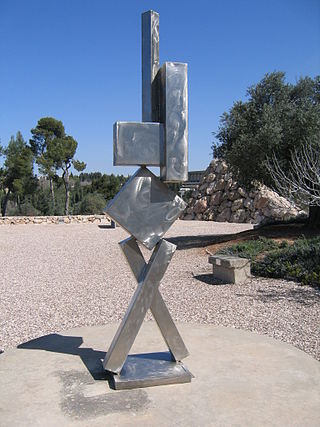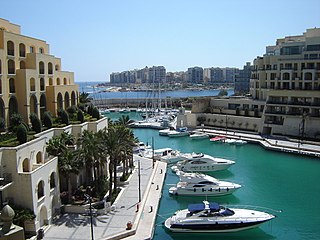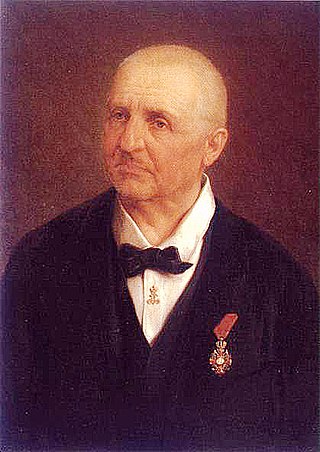
There were two corps of the Union Army called IV Corps during the American Civil War. They were separate units, one serving with the Army of the Potomac and the Department of Virginia in the Eastern Theater, 1862–1863, the other with the Army of the Cumberland in the Western Theater, 1863–1865.
Pope John may refer to:
- Pope John I (523–526)
- Pope John II (533–535)
- Pope John III (561–574)
- Pope John IV (640–642)
- Pope John V (685–686)
- Pope John VI (701–705)
- Pope John VII (705–707)
- Pope John VIII (872–882)
- Pope John IX (898–900)
- Pope John X (914–928)
- Pope John XI (931–935)
- Pope John XII (955–964)
- Pope John XIII (965–972)
- Pope John XIV (983–984)
- Pope John XV (985–996)
- Pope John XVII (1003)
- Pope John XVIII (1003–1009)
- Pope John XIX (1024–1032)
- Pope John XXI (1276–1277)
- Pope John XXII (1316–1334)
- Pope John XXIII (1958–1963)

Corps badges in the American Civil War were originally worn by soldiers of the Union Army on the top of their army forage cap (kepi), left side of the hat, or over their left breast. The idea is attributed to Maj. Gen. Philip Kearny, who ordered the men in his division to sew a two-inch square of red cloth on their hats to avoid confusion on the battlefield. This idea was adopted by Maj. Gen. Joseph Hooker after he assumed command of the Army of the Potomac, so any soldier could be identified at a distance.

The Cubi series is a group of stainless steel sculptures built from cubes, rectangular solids and cylinders with spheroidal or flat endcaps. These pieces are among the last works completed by the sculptor David Smith. The artist died in a car accident on May 23, 1965, soon after the completion of Cubi XXVIII, which may or may not have been the last sculpture he intended to create in this series. The Cubis are among Smith's final experiments in his progression toward a more simplified, abstract form of expression. As an example of Modernism, these are representative of the monumental works in industrial materials that characterized much of the sculpture from this period.

Seeing Things is the eighth poetry collection by Seamus Heaney, who received the 1995 Nobel Prize in Literature. It was published in 1991. Heaney draws inspiration from the visions of afterlife in Virgil and Dante Alighieri in order to come to terms with the death of his father, Patrick, in 1986. The title, Seeing Things, refers both to the solid, fluctuating world of objects and to a haunted, hallucinatory realm of the imagination. Heaney has been recorded reading this collection on the Seamus Heaney Collected Poems album.

The Trofeo Almirante Conde de Barcelona is an annual sailing competition. The yachts usually start from Mallorca. The name and trophy commercial rights are owned by the merchant "Bono Asociados SL".

Stonewall Jackson and the American Civil War is a 1898 biography of Confederate States Army general Stonewall Jackson, including his actions during the American Civil War. Written by British Army officer and author George Francis Robert Henderson, it became Henderson's most well-known work. The book chronicles Jackson's life, beginning with his education at the United States Military Academy and the Virginia Military Institute, to his role in the 1862 Jackson's Valley campaign, as a corps commander in the Army of Northern Virginia under Robert E. Lee and up to his death after the Battle of Chancellorsville in 1863. The twenty-five chapter work took eight years to complete and was first printed in two volumes, but since has been reprinted several times with most copies available as one complete book.
The numbering of "Popes John" does not occur in strict numerical order. Although there have been twenty-one legitimate popes named John, the numbering has reached XXIII because of two clerical errors that were introduced in the Middle Ages: first, antipope John XVI was kept in the numbering sequence instead of being removed; then, the number XX was skipped because Pope John XXI counted John XIV twice.
During the American Civil War, a department was a geographical command within the Union's military organization, usually reporting directly to the War Department. Many of the Union's departments were named after rivers or other bodies of water, such as the Department of the Potomac and the Department of the Tennessee. The geographical boundaries of such departments changed frequently, as did their names. As the armies became larger Departments began to be subordinated to Military Divisions, and the Departments were often sub divided into Districts and from 1862 Subdistricts. Much information on Civil War departments can be found in Eicher & Eicher, Civil War High Commands.

The Bruckner Gesamtausgabe is a critical edition of the works of Anton Bruckner. Published by Musikwissenschaftlicher Verlag Wien in Vienna, it comprises three successive editions.
Shoulder sleeve insignia (SSI) are cloth emblems worn on the shoulders of US Army uniforms to identify the primary headquarters to which a soldier is assigned.
The Luxembourg national rugby sevens team made up primarily from the XV Team competes annually in European competitions. Entered first tournament in 1996.